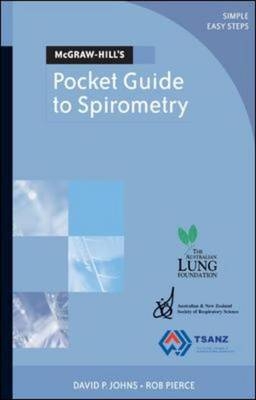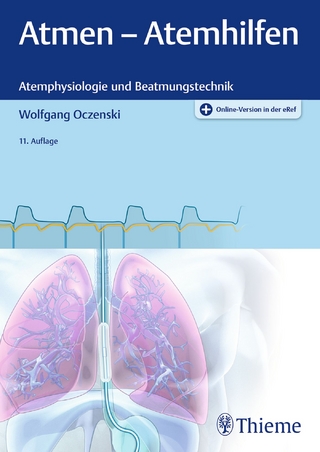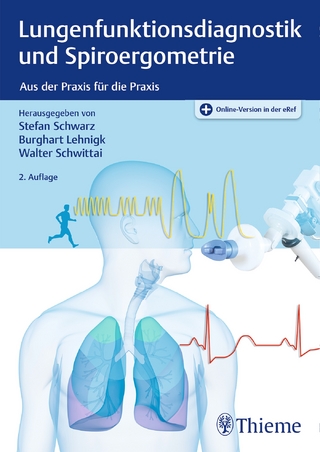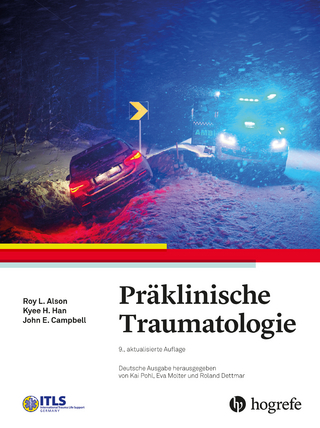
McGraw-Hill's Pocket Guide to Spirometry
McGraw-Hill Medical (Verlag)
978-0-07-471331-0 (ISBN)
- Titel ist leider vergriffen;
keine Neuauflage - Artikel merken
"McGraw-Hill's Pocket Guide to Spirometry" explains all a practitioner needs to know about spirometry what a spirometer is, how to use one, how to interpret test results, the different types of spirometers presenting the information in a practical, systematic manner. This is an essential aid for GPs and for all practitioners and nurses treating patients with respiratory conditions. It is another excellent addition to the "McGraw-Hill's Pocket Guide" series.
David P. Johns is Conjoint Associate Professor and consultant in Clinical respiratory science at the University of Tasmania and the Royal Hobart Hospital. Rob Pierce is Professor of Respiratory Medicine at the University of Melbourne and Director of the Institute for Breathing and Sleep and Director of the Department of Respiratory and Sleep Medicine at Austin Hospital, Victoria, Australia.
ForewordPreface
Acknowledgments
Introduction
PART 1
Chapter 1 What is spirometry and what are its uses?
The function of the lung and lung function tests
Indications for spirometry
Complications and contraindications
Summary
Chapter 2 Measurement of ventilatory function
The spirogram
Indices based on 6-second forced expiration
Inspiratory capacity
The flow-volume curve or loop
Summary
Chapter 3 Measurement devices
Volume-displacement spirometers
Flow spirometers
Monitoring devices and peak flow meters
Calibration and quality control
Factors to consider when choosing a spirometer
Summary
Chapter 4 How to do spirometry and the common problems
How to do spirometry
Measurements in young children
Acceptability criteria
Back-extrapolation
Patient-related problems
Instrument-related problems
Performing spirometry in the busy clinical practice
Summary
PART 2
Chapter 5 Infection Control
Cross-infection and lung function testing
Reducing the risk of cross-infection
Summary
Chapter 6 Predicted normal values
Normal values
Selecting the most appropriate normal values
Summary
PART 3
Chapter 7 Interpretation of ventilatory function tests
Significant change in spirometry with time
Classifying abnormal ventilatory function
Grading severity of a ventilatory defect
Measuring reversibility of airflow obstruction
Airway provocation testing
Peak flow monitoring
Choosing the appropriate test
Summary
Chapter 8 Case histories
Case 1
Case 2
Case 3
Case 4
Case 5
Case 6
Case 7
Case 8
Case 9
Case 10
Summary
PART 4
Chapter 9 Mechanics of breathing
Gas flow through the airways-how airflow is produced
Patterns of airflow in the human airways
The phenomenon of maximal airflow limitation
Theories of airflow obstruction
How pulmonary disease affects airflow
Summary
Chapter 10 Summary
Appendix A Equipment standards and validation procedures
Appendix B Correction of volume and flow to BTPS
Appendix C Predicted normal values
Glossary
References and further reading
Index
| Erscheint lt. Verlag | 16.10.2003 |
|---|---|
| Zusatzinfo | 30 illustrations |
| Verlagsort | New York |
| Sprache | englisch |
| Maße | 45 x 70 mm |
| Themenwelt | Medizinische Fachgebiete ► Innere Medizin ► Pneumologie |
| ISBN-10 | 0-07-471331-0 / 0074713310 |
| ISBN-13 | 978-0-07-471331-0 / 9780074713310 |
| Zustand | Neuware |
| Informationen gemäß Produktsicherheitsverordnung (GPSR) | |
| Haben Sie eine Frage zum Produkt? |
aus dem Bereich


